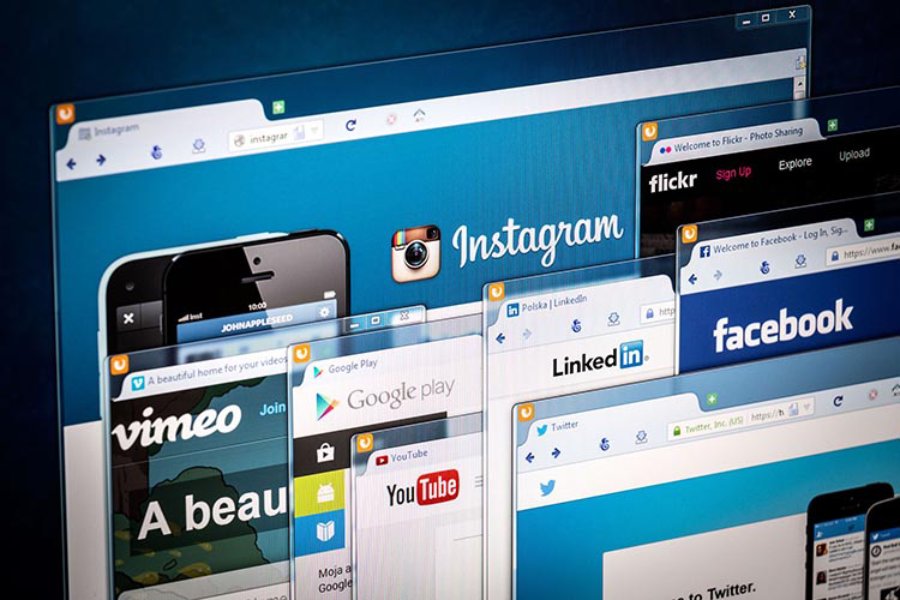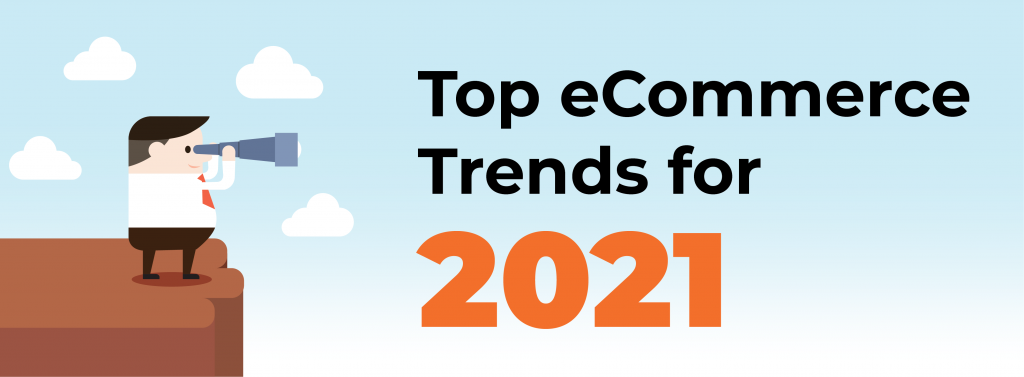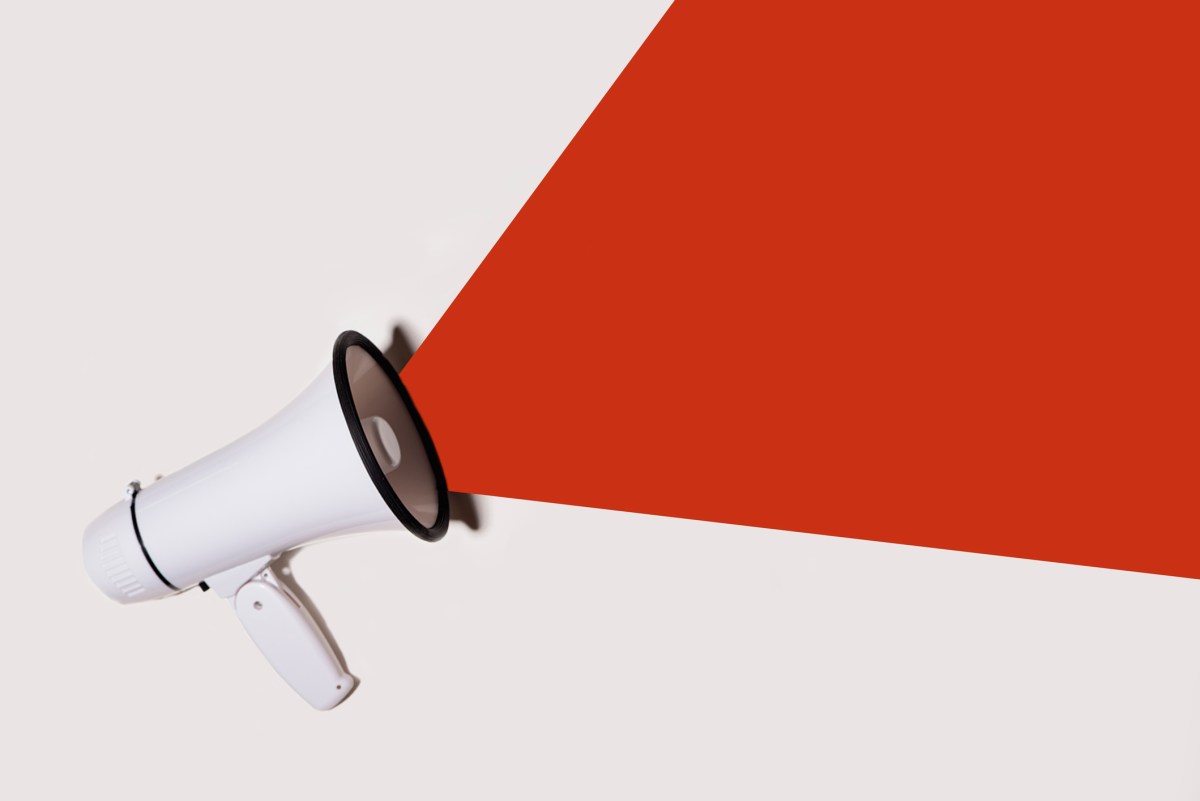
Social media: We all know it, have it, and want to include it in some way in our marketing strategies—and with good reason. Social media can be one of the most powerful tools to grow your business’s online presence. But it can also be tricky to navigate. With trends shifting nearly every day, social media is one of the most dynamic platforms in marketing, so companies are bound to commit a few social media fails and blunders every now and then.
Below are 11 examples of social media mistakes from brands both big and small, along with what you can learn from them to craft better campaigns.
1. Entenmann’s Tweet: Surfing on the Wrong Hashtag
Always check hashtags before joining them. (Source: Entenmann’s)
Hashtags are the keywords of social media. They’re a great way to let your content be seen by many people and be part of a larger conversation. However, as with any other social media trend, knowing the context and origin behind a trending hashtag is always crucial before joining one, and it could potentially save your brand from a major blunder.
One example of such a blunder is from the bakery brand Entenmann. On X (formerly Twitter), the brand inadvertently joined the trending #notguilty hashtag to garner engagement—without first checking its origin and context. In reality, the hashtag was from a real criminal court trial, through which users were voicing their opinions on a murder case—which Entenmann’s attempted to make a lighthearted discussion of.
The company eventually took down the tweet and posted an apology after receiving some backlash.
The verdict: While Entenmann’s X (Twitter) strategy was essentially harmless, and in any other situation, potentially effective, the brand’s big pitfall was failing to do due diligence before joining a trend. Especially with a hashtag as common as #notguilty, it’s essential to always do a quick check, or else you might end up joining the wrong online discussion.
Key takeaways:
- Always check a trending hashtag’s origin and context before joining in on the discussion.
- If you do end up unintentionally joining the wrong hashtag, admit your mistake, delete your post, and post a sincere apology.
2. Draper James’ Instagram Dress Giveaway: Unclear Contest Mechanics
Draper James’ unclear contest mechanics caused a campaign to spiral out of control. (Source: Draper James)
Social media contests and giveaways can be a great way to boost engagement. They’re one of the best sales promotion ideas you can do without breaking the bank. However, one major obstacle is in the mechanics. Social media contests are no different from real-world contests, so you need to be sure to clearly define and communicate your rules and contest requirements to eliminate confusion among participants.
This proved to be retail brand Draper James’ biggest misstep in an Instagram dress giveaway, which proffered to give away dresses to every teacher as a token of support throughout the pandemic. However, the Instagram caption only mentioned registering via a link without referencing any limitations. Soon enough, the link garnered nearly one million registrations—the problem is, the company only had 250 dresses to give away.
The verdict: Draper James’ Instagram giveaway is a classic example of failing to communicate a social media contest clearly and thoroughly and having far too many participants than you can handle as a result. Draper James’ social media blunder could have easily been avoided with a few copy edits that clarified their giveaway’s mechanics—for example, stating that dresses could only be given away to the first 250 registrants.
Key Takeaways:
- Plan social media contests and giveaways thoroughly, and clearly state the rules, requirements, and other mechanics in your post.
- Make sure your social media copy is clear and understandable. Before posting, have them tested and copyedited by others to ensure that nothing is amiss or unclear.
3. Burger King’s International Women’s Day Tweet: Clickbait on the Wrong Platform
An example of social media gone wrong: Burger King’s tone-deaf tweet from 2021 (Source: Burger King)
In the digital age, we’re all familiar with brands riding on special occasions to launch special promotions and campaigns. While there is nothing inherently wrong with that, Burger King’s 2021 Women’s Day Tweet is a great example of how to do it the wrong way.
The tweet starts with a simple sentence stating that “women belong in the kitchen.” While obviously meant as clickbait to get readers to engage with the tweet (the thread announced the launch of a culinary scholarship program for women), users were quick to call the brand out for promoting outdated ideas. Needless to say, the tactic backfired, and Burger King ultimately took the tweet down to avoid a potential social media scandal.
The verdict: Controversy as a marketing tactic is nothing new, but it’s always tricky to get right, especially on social media. In Burger King’s case, they failed to take into account X (Twitter)’s format as a platform, where users only see one tweet at a time instead of a whole thread. This caused their headline to be misunderstood, and users found the brand’s attempt at clickbait to be tone-deaf—creating one of the biggest social media marketing mistakes in recent memory.
Key takeaways:
- When planning a social media campaign, always take your social media platform’s format and user behavior into account.
- Be sure your copy headlines aren’t tone-deaf and offensive—again, always check and copy-edit.
4. Audi’s #PaidMyDues Instagram Campaign: Irrelevant Social Content
Audi’s Instagram campaign is a reminder to always know your audience before launching a campaign. (Source: Audi USA)
Taking risks can sometimes reap great rewards for your brand—but not always. A brand that learned this the hard way with a social media fail on Instagram is Audi, with its 2014 #PaidMyDues Instagram campaign. As a concept, the campaign was a noble one, meant to highlight Audi drivers in a video series to humanize the brand and be more relatable to its customer base.
While the campaign was launched with good intentions, Audi’s Instagram followers eventually turned against the new direction, finding the videos and images of drivers irrelevant to what they wanted from the brand on Instagram. Soon enough, Audi’s Instagram posts were flooded with negative comments, and the brand returned to posting regular car images after a few weeks.
The verdict: Audi’s #PaidMyDues Instagram campaign was clearly intended to humanize the brand and express appreciation for its customers. However, while made in good faith, the campaign is a clear example of the consequences of not doing comprehensive research about your audience, their interests, and what they want from you on social media.
Key takeaways:
- Always know your audience, especially what they want and expect from you on social media.
- Do intensive research to be sure all your marketing risks are well-calculated.
Not sure what your audience is looking for on social media? Use customer personas to better understand your target audience—and help you avoid social media campaign fails like the one above.
5. Listerine’s Partnership With Influencer Scarlett London: Brand & Influencer Mismatch
Partnering with the wrong influencer is one of the biggest social media failure examples, as with Listerine’s partnership with Scarlett London. (Source: @scarlettlondon)
Influencer marketing is a great way to introduce your brand to niche audiences and can be effective when done correctly. However, one of the biggest mistakes brands make is partnering with influencers that don’t accurately match or represent their brand values. This was the case with Listerine’s partnership with lifestyle influencer Scarlett London on Instagram.
As an IG influencer, Scarlett London is best known for her lifestyle, fashion, and wellness content. So when one of her posts advertised a partnership with Listerine in the caption, followers found the overall effect jarring and inauthentic—with many finding London’s social media content to have no correlation to the Listerine brand or product at all. Many called out her photo for being far too staged and irrelevant to her fans’ interests.
The verdict: While there is nothing inherently wrong with Scarlett London’s post, this particular partnership illustrates how quickly influencer marketing can backfire without the proper planning and research.Listerine might have better benefited from partnering with a different influencer that accurately represented their customers and medical, fact-based branding more accurately, or if they had given better directions regarding content and caption.
Key takeaways:
- When doing influencer marketing, do intensive research on influencers to ensure their content matches your brand’s core values.
- When you have an influencer partnership, give clear directions regarding post content and caption, including the type of image you want them to post, the caption’s tone, and so on.
6. US Department of Health’s Facebook Meme: Meme & Audience Mismatch
Trend jacking on social media is one way to show that your brand is keeping with the times, and a popular way of doing so is via social media memes. A staple of social media culture, memes play a prominent role in how people communicate on the internet, with a new meme going viral seemingly every week. Naturally, a digital strategy for many brands is to ride along with memes’ popularity and put their own spin on it.
Sure enough, many brands find success in meme-jacking and garner tons of engagement. But there are cases when they completely miss the mark—as with the US Department of Health’s Facebook post, which used the then-viral “doge” meme to announce its health insurance program. Being such a jarring deviation from the organization’s usual content, the meme drew confusion from followers instead, drawing attention away from the main message.
The verdict: Meme marketing on social media has been around for a few years now, and has proven effective for engaging with followers in fun, lighthearted ways. However, they take a certain understanding of Internet culture to get right. If a meme seems forced, internet users will know. And, certain memes appeal only to certain audiences—the current most viral meme might not appeal to your followers’ taste, as was the case with the US Health Department.
Key takeaways:
- Before riding on a meme, always know its full context and origin, then determine if it fits your brand values and follower base.
- When dealing with a serious topic (or if your brand is a highly authoritative one, like a branch of the government), consider whether humor would be a social media blunder.
7. Bioré’s TikTok Creator Partnership: Authenticity Done the Wrong Way
TikTok audiences value authenticity—not promotion. (Source: @cecileemax)
TikTok is one of today’s most prominent social platforms, with its trademark short-form narrative videos offering a new sense of authenticity and personal connection. Brands have since taken advantage of the platform to promote products in more personal ways, especially through creator partnerships. One such brand is Bioré, which partnered with TikTok creator Cecilee Max-Brown to create relatable content promoting their products.
The resulting TikTok video shows Max-Brown in a “get ready with me” routine as she discusses struggling with mental health issues, all while applying Bioré’s products. While the video is undoubtedly personal, many found it off-putting to imply that the brand’s skincare products helped alleviate mental health issues, and called the brand out for capitalizing on people’s personal struggles.
The verdict: It’s no surprise that many brands want to harness TikTok’s knack for authenticity to reach customers in more personal ways. However, one vital mistake on the platform is being overtly sales-y and putting your brand first and foremost, in effect making even organic content feel like a TV ad—as was the case with Bioré. On TikTok, marketing is all about being genuine and engaged—not promotional.
Key takeaways:
- One of the biggest social media fails is being overly promotional, but exponentially so on TikTok. To gain a captive audience, always be genuine and authentic and put your customers first.
- Don’t present your product as something it’s not. Even if today’s audiences expect more social responsibility from brands than ever, be sure to discuss them in sensitive, responsible ways.
8. Mastercard’s Failed Twitter Hashtag Campaign: Garnering Credibility on the Wrong Platform
If you’re planning to build brand credibility, Twitter probably isn’t the right place. (Source: @adambanksdotcom)
Mastercard’s Twitter hashtag campaign for the 2014 Brit Awards still represents one of the biggest failed social media campaigns in recent memory. As the event’s primary sponsor, Mastercard hoped to maximize its brand presence as much as possible. Part of its strategy was requesting journalists covering the event to tweet using the brand’s official hashtag throughout the night in exchange for a ticket.
However, things didn’t quite go as planned. Many journalists took offense at Mastercard’s email, which also included scripts for suggested tweets at specific points throughout the night and requests to retweet from the brand’s official account. Journalists on Twitter accused the agency of being ignorant of journalism’s principles (editorial independence, for one), while others hijacked the hashtag to make fun of the brand’s social media blunder.
The verdict: Like any other brand, Mastercard (via its PR agency) naturally wanted to maximize its ROI (return on investment) as the main sponsor of a major event. However, its biggest misstep was not tailoring its campaign objectives to each platform, which led to its attempt to garner press credibility via Twitter—a platform much better suited for gaining awareness and engagement.
Key takeaways:
- Choose the right platform for each marketing objective (i.e., don’t incorporate press coverage into social media campaigns).
- Always remember that social media is a platform most effective for awareness, engagement, and customer interaction—not for increasing credibility.
9. Ryanair’s Tweet: Taking Brand Voice Too Far
While Ryanair is well known for its snarky social media humor, some users thought this post went too far. (Source: Ryanair via X)
Organic social media can be an excellent platform to promote your brand voice and personality and attract like-minded people to engage with your brand. One of the best players of this strategy today is the European budget airline Ryanair. The brand has since built its name on its humorous, tongue-in-cheek approach to social media that’s far from the usual you’d expect from most airlines.
Unlike most airlines, Ryanair’s social media is full of humor, memes, and everyday interactions with its followers, often involving a lot of snark. While most users are already familiar with (and even enjoy) this unconventional approach, one particular tweet poking fun at Ryanair’s cabin crew struck users the wrong way, with many finding it insensitive and disrespectful. In a rare move for the usually unapologetic airline, Ryanair quietly took down the tweet.
The verdict: While Ryanair nailed its organic social media strategy for the most part, developing a strong brand voice and regularly engaging its follower base, it’s not perfect. More than anything, this is one of the social media mistakes that comes with the risk of deviating from the usual playbook. While it’s totally fine to craft a unique and unconventional voice, always keep it within respectful standards.
Key takeaways:
- Pick your battles. Carefully monitor all the mentions you get from your followers before engaging with them. Beyond checking if they’re a good fit for your brand identity, also make sure to remain 100% respectful and professional to maintain your brand credibility.
- Have a clear playbook of your brand voice do’s and don’ts so you don’t get embroiled in mishaps like engaging with the wrong social media posts. They can give clear guidelines on the right or wrong kind of posts to interact with.
10. Queensland Symphony Orchestra’s Ad: Trusting AI to Tell an Authentic Story
Always use AI as an assistive tool, not relying on it 100% like in Queensland Symphony Orchestra’s example above. (Source: Queensland Symphony Orchestra via Facebook)
If you’ve been online in the past few years, you’re likely aware of the atmospheric growth of AI technology, including in marketing. And while AI can have many uses for marketing, it’s far from perfect. Case in point: the AI-generated image in Queensland Symphony Orchestra’s Facebook ad—one of the more modern social media blunders brought on by AI-generated content.
While AI tools like ChatGPT can make your processes more efficient, it’s important to remember that it’s only a tool to assist your marketing efforts—not take over them completely. In Queensland Symphony Orchestra’s case, their AI-generated image served the opposite of its intended effect, coming off as low-quality and unprofessional instead of trustworthy and inviting.
The verdict: Social media thrives on authenticity, which is the exact opposite of what Queensland Symphony Orchestra’s ad conveyed. This is especially so because it marketed a live event, where users expect to see a glimpse of a real experience that would entice them to purchase a ticket.
Key takeaways:
- Use AI with caution. More than anything, AI should be an assistive tool to your team’s marketing efforts and not something you should rely on 100%. After all, it isn’t perfect and, as we can see, still struggles to draw hands and other body parts accurately.
- Carefully evaluate AI-generated content and the message it sends before using it in marketing, especially in paid ads. When done the wrong way, AI content can come off as untrustworthy and unprofessional.
11. Safety Warehouse’s Facebook: Misleading Event Mechanics
Events can be a great way to promote your brand, but unclear mechanics can be recipes for social media failures, like this example. (Source: Safety Warehouse)
Events are a tried-and-true way to garner mass awareness and interest for your business. They can even be cost-effective and generate several new leads for your business. However, they can also be tricky to set up and execute, especially through social media. One brand that learned this the hard way is the New Zealand-based company Safety Warehouse, which announced on its Facebook page a $100,000 cash drop as a promotional event.
However, people were eventually dismayed at the event upon realizing that the promised “cash” were actually store vouchers, leading to backlash and complaints against the brand. However, instead of apologizing for its blunder, the brand went defensive in its apology, saying they were “unfairly characterized.” Since then, the brand has taken down its original Facebook post.
The verdict: There are two parts that make Safety Warehouse’s mishandled event one of the biggest recent social media fails: unclear communication of the event’s mechanics and a deflective apology. Together, they’re a recipe for a social media PR disaster that can ultimately reduce your brand’s credibility in the long term.
Key takeaways:
- One of the biggest rules of social media marketing is transparency. In a platform where messages can be interpreted in a million different ways, transparency when promoting events is crucial to ensure everyone has a crystal clear understanding and expectation.
- Don’t be defensive. Good marketing is all about catering to your customers. So when they call you out, listen and understand where they’re coming from instead of jumping on the defense—it’ll only alienate them further from your business.
How to Avoid Social Media Mistakes and Fails (Do’s & Don’ts)
Social media can be a tricky space to navigate, but it still offers a wealth of opportunities for your small business’s growth. While there is no one-size-fits-all solution for how to use social media to grow your business, a few basics stand the test of time, like knowing your audience, doing lots of research and planning, and staying agile.
Here are some key do’s and don’ts for social media marketing to help avoid social media fails like those above:
How to Address a Social Media Scandal or Blunder
It’s best to take preventive measures to avoid making mistakes on social media, such as following a social media plan and doing intensive research. But it’s sometimes inevitable to fall into one. Social media mistakes can happen to anyone—even the biggest corporations—and what matters most is how you respond and act on them afterward. If you find yourself in a social media scandal or blunder, here are tips on how to respond:
- Acknowledge your mistake: Even if you made your post with good intentions, negative feedback means that it still caused harm in some way, and the best thing to do is to be apologetic and acknowledge your error—both outwardly and internally. Your customers’ concerns should always come first, and their feedback can help steer your company in the right direction moving forward.
- Address the issue directly: Skirting around or completely ignoring your blunder will do your brand more harm than good, so the best course of action is to address it head-on. Publish a statement quickly and keep it clear, concise, and focused solely on the issue, including how your company is learning from it and committed to doing better in the future. Find out more about how to write a crisis communication announcement.
- Be apologetic and appreciative: It isn’t enough to just address the issue outright—how you address it matters just as much and will determine how customers will perceive your brand. To keep your brand in good standing, keep your statement apologetic and appreciative—apologize for your mistake, then thank your followers for calling it out.
- Respond politely: You’ll likely also get a considerable amount of negative comments flooding your notifications and inboxes. While it may seem like an impossible battle, try to respond to each politely and considerately and show you hear their concern. Take note of their criticism, and communicate what you’re doing to alleviate the situation.
- Make things right: Depending on the blunder you find yourself in, you may have the opportunity to make it right and come out even better than before. For example, if a customer called your brand out on social media for getting their order wrong, sending them a gift box could improve your standing. Think of ways to genuinely give back to your customers.
- Follow through on your commitments: Finally, every social media blunder is an opportunity for growth. Whatever issue you corrected and the knowledge you gained from it, make sure to follow through on your commitment to do better, whether that includes changing a store policy or revising an entire brand strategy, and so on.
Pro tip: Having the right social media strategy is crucial to your success, but it can be a lot for any business owner to handle. For expert help, partnering with an experienced social media marketing agency could be your best option.
Our best recommendation for small businesses is LYFE Marketing—the team can craft, execute, and handle all your social media strategies for you at inexpensive prices.
7 Statistics on Social Media Mistakes & Best Practices
Social media mistakes don’t have to define your brand. With social media growing every day, customers are expecting more than ever from brands’ social channels. Check out the statistics below to better understand today’s social media landscape.
- 69% of social media users expect brands to respond to queries and concerns within 24 hours.
- Meanwhile, on average, 46% of customers say brands respond to queries in under an hour—surpassing some customers’ expectations.
- However, timing differs for harmful content. If harmful or offensive content is posted on brands’ social media pages, over 90% of users expect a response within 24 hours, and 63% in less than an hour.
- 78% of business owners say that managing online crises too late can harm their brand’s reputation, employee morale, and overall sales.
- Only 30% of customers fully agree with brands publicly taking stances on societal issues. And even then, when brands address them, customers expect full transparency and honesty.
- 51% of social media users say the most memorable action a brand can do on social media is simply providing a response.
- 76% of social media users appreciate when brands prioritize customer support.
- Social media comments can affect purchase decisions, too. 43% of customers say seeing negative comments on a brand’s social media page discourages them from completing a purchase.
Frequently Asked Questions (FAQs)
Social media fails for multiple reasons, but the most common is not having a guiding strategy or a good understanding of the platform and its audience. For example, trying to engage a young, Gen-Z audience on a saturated platform like Facebook is one of the most common social media mistakes because of an audience and platform mismatch. Another common social media error leading to failure is being too self-promotional instead of focusing on your audience.
The best way to avoid social media errors is through thorough research of your audience on each social platform and crafting a strategy that fits each platform’s ecosystem. It’s also important to be authentic: create content that centers on your audience’s needs and wants instead of being overtly promotional about your brand and respond promptly to concerns and messages. Finally, it’s also important to stay agile and respond to shifting trends.
The foremost reason businesses fail on social media is not doing appropriate research to understand their audiences on each social platform. This leads to businesses creating content that’s neither interesting nor relevant to their audiences and eventually gets ignored. Other reasons businesses fail on social media are taking on too many platforms instead of focusing on the few most relevant, being overly self-promotional, and not adapting to shifting trends.
Bottom Line
There’s no overstating the power of social media in giving brands and audiences multiple avenues to interact with one another. Social media allows for more personal and authentic connections than ever, and while it can be a tricky space to navigate, its benefits far outweigh its risks in the long run—all it takes is the proper know-how. The social media fails from brands above are good lessons to learn from to craft better campaigns for your business.





